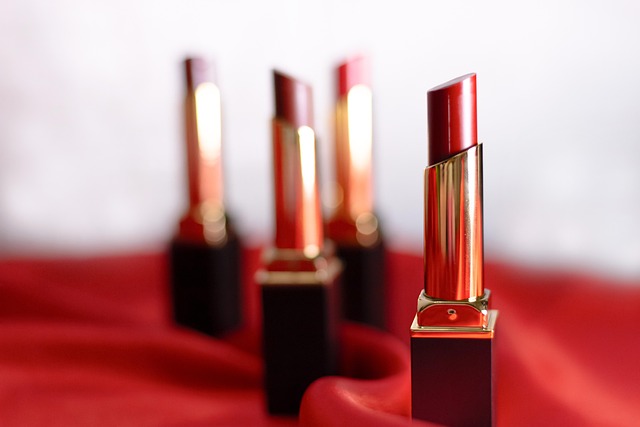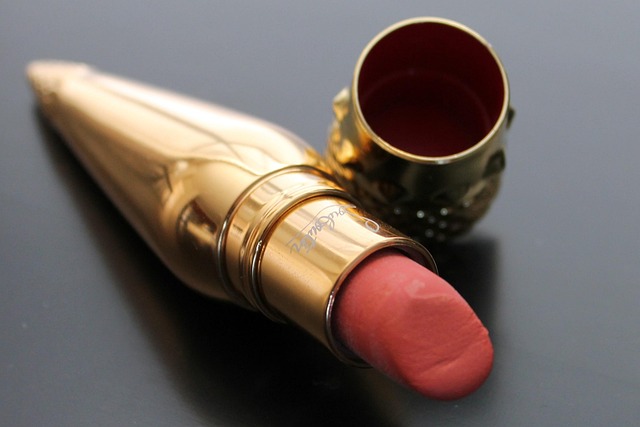BFF (Best Friend Forever) lipsticks blend natural ingredients like beeswax, mineral pigments, and emollients like shea butter for vibrant color, protection, and moisturizing benefits. They avoid synthetic compounds linked to health issues common in conventional lipsticks. Stringent FDA regulations and ingredient transparency ensure BFF lipsticks' safety. Their lightweight formula offers seamless blend, long-lasting wear, and a must-have for everyday beauty or boosting confidence.
“Unveiling the Secrets of Your Favorite Beauty Product: Lipstick. From its vibrant hues to its soothing feel, lipstick is a staple in many daily routines. But what exactly is inside these colorful tubes? This article takes you on a journey through the ingredients that make up your go-to bff lipstick. We explore the common chemicals, their potential health impacts, and how regulatory standards are trying to keep up with the ever-evolving beauty industry. Get ready to choose lipsticks that not only enhance your look but also prioritize your well-being.”
- What is Lipstick Made Of?
- Common Chemicals in BFF Lipstick
- Potential Health Risks Associated with Chemical Ingredients
- Regulatory Standards and Safety Measures
- Choosing Safe and Natural Lipsticks
What is Lipstick Made Of?

Lipstick, a beloved beauty staple for many, is more than just a colorful tint for your lips. It’s a carefully crafted blend of various ingredients designed to enhance and protect the delicate skin on your pout. The formula typically consists of a combination of waxes, oils, pigments, and additives, each playing a crucial role in creating the desired texture, shade, and longevity of the product.
One of the key components is beeswax, which provides structure and helps the lipstick glide smoothly over the lips. It’s followed by various oils like cocoa butter, shea butter, or jojoba oil, responsible for moisturizing and conditioning the skin. Pigments, ranging from minerals to synthetic dyes, offer the vibrant colors we associate with lipsticks. Fatty acids, preservatives, and flavors or fragrances complete the list, ensuring the final product is safe, stable, and pleasant to use. For those seeking a natural alternative, ‘bff lipstick’ brands often opt for plant-based alternatives, substituting traditional waxes and oils with sustainable counterparts, catering to the growing demand for eco-friendly beauty products.
Common Chemicals in BFF Lipstick

Lipstick, a staple in many people’s daily routines, contains a variety of chemicals that contribute to its texture, color, and longevity. When it comes to BFF lipstick, a brand known for its high-quality and natural formulations, several common chemicals stand out. One of the primary ingredients is wax, which provides structure and helps the lipstick maintain its shape. Beeswax, carnauba wax, and candelilla wax are commonly used, offering a smooth application and providing moisture to the lips.
Another essential component is pigment, responsible for the vibrant colors associated with lipsticks. BFF Lipstick often utilizes mineral-based pigments derived from natural sources like iron oxides, manganese violet, and titanium dioxide. These pigments offer not only rich colors but also ensure the product is safer for sensitive skin. Additionally, emollients such as shea butter and cocoa butter are included to enhance the lipstick’s moisturizing properties, making it comfortable to wear for extended periods without drying out the lips.
Potential Health Risks Associated with Chemical Ingredients

The ingredients in your favorite bff lipstick might be enhancing your look, but some of these chemicals could pose potential health risks. Many conventional lipsticks contain a variety of synthetic compounds, including ones that have been linked to skin irritation, allergies, and even long-term health issues.
Parabens, for instance, are often used as preservatives in cosmetics but have been associated with hormonal imbalances. Lead and other heavy metals have also been found in some lipsticks, which can cause damage to the nervous system and other vital organs over time. Additionally, certain dyes and pigments may contain contaminants that can lead to dermatitis or other skin reactions. Choosing bff lipstick with natural, organic ingredients can help minimize these risks, ensuring your beauty routine remains safe and healthy.
Regulatory Standards and Safety Measures

The safety of cosmetics, including BFF lipstick, is heavily regulated to protect consumers from potential harm. Strict guidelines are in place to ensure that the ingredients used are non-toxic and that products undergo rigorous testing for safety. These standards are set by regulatory bodies like the FDA (Food and Drug Administration) in the United States, which requires manufacturers to demonstrate the safety of their products before they can be sold.
One key aspect is the scrutiny of chemical components. Lipstick formulations should avoid certain controversial chemicals that have raised health concerns. For instance, some studies have linked ingredients like lead, formaldehyde, and parabens to various health issues. Therefore, responsible BFF lipstick brands opt for safer alternatives and transparently disclose their ingredient lists, allowing consumers to make informed choices based on their personal preferences and sensitivities.
Choosing Safe and Natural Lipsticks

Lipstick, a staple in many beauty routines, is composed of various chemicals that can vary widely in safety. While BFF lipstick and similar products often market themselves as natural and safe, it’s crucial to be informed about potential health risks associated with certain chemical ingredients. Understanding the components, from waxes and pigments to preservatives and flavorings, empowers consumers to make educated decisions. By opting for lipsticks that adhere to regulatory standards and prioritizing natural, non-toxic formulas, individuals can enjoy their makeup while minimizing health concerns. Choosing safe and natural BFF lipsticks ensures a healthier pout without compromising on style or beauty.
